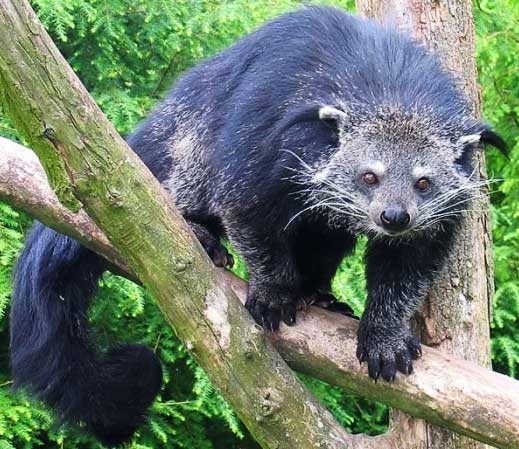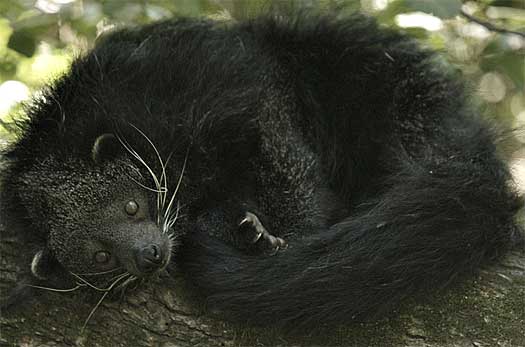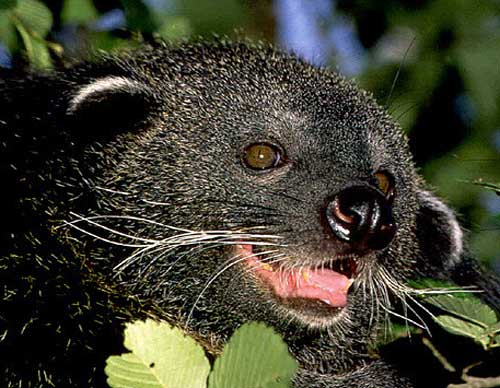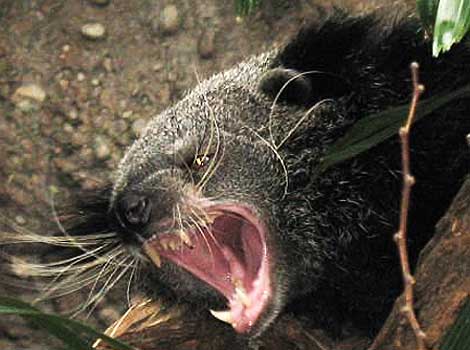Binturong – Asian Bearcat with Large Bushy Tail

One large specimen. Photo credit: Tassilo Rau
The binturong is a peculiar animal, also known as the Asian bearcat. Despite this nickname it is neither a bear nor a cat! It is native to the jungle regions of South-East Asia including countries such as Myanmar, Malaysia and Vietnam.

The binturong is a large and carnivorous and sports a large bushy tail. It varies in size from 24 – 38 inches (60 – 96 cm) long and 20 – 31 lbs (9 – 14 kg) in weight. It survives by preying on small reptiles, birds and mammals although it has been observed that it’s main diet has been comprised of fruit and other plant matter. They have been recorded as living up to 25 years in captivity and their numbers are being severely affected in the wild due to deforestation.

The binturong is nocturnal and spends its days sleeping on tree branches. After dark, they wake up and go out hunting. Their black fur is great for sneaking around in the dark. Imagine trying to find one in the dark jungle night – forget it! It is known as a vicious animal when threatened but is not known for being aggressive otherwise.
An interesting fact about the binturong is that it loves the sound of its own voice! It’s a very vocal species and makes a range of interesting sounds from a gruff chuckling when seemingly pleased to a high-pitched wail when it has been disturbed or attacked.

This bearcat is a strong climber and leaps from tree branch to tree branch using its strong bushy tail and sharp claws to cling on. This swinging and leaping is especially prominent when the it is looking for prey. Another quirky fact is the it is able to rotate its hind legs backwards so it can still use its claws when heading up and down trees in reverse.

The binturong’s tail has other uses as well as for balance. It uses its tail to communicate with others. Its tail has a specialized scent gland which it rubs against trees and simultaneously howls to let others know of its presence.
The female is an amazing creature. She can time the birth of her young to coincide with the correct environmental conditions. This means the animals can mate at any time of the year as the female can decide exactly when is best to birth her young. Like some other mammals, the female is up to 20 percent bigger than male and is the dominant sex.
